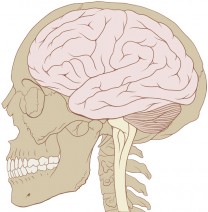Subconscious Human Behavior: Statements versus Commands
I use commands, instead of statements, to encourage people to do things. There’s a reason for that.
First of all, you should follow me on twitter.
I find subconsciously human behavior extremely interesting. It doesn’t matter what we do knowingly, it’s those milliseconds where our brain is making hundred of choices that affects what we do. All of our smaller actions, like clicking a link or not, is done utterly subconsciously. We just do it, but there’s always a reason behind it. There’s obviously different reasons, and often more than one, for us doing something (like the visuals), but for this article, I’ll talk about the text, specifically the difference between using a statement and command.
I’ve read several interesting articles over the last year about how certain smaller changes have affected clickthrough rates with huge results. I’d love to give them all credit and link back to them, but I could only remember and find two:
by Dustin Curtis</p>
Dustin did a study where he created different phrases and showed it to 5000 random people a time. He increased the clickthrough rate with 173% from a simple statement: “I’m on Twitter.”, to a command: “You should follow me on twitter here.”.
by Jason Fried (via Think Vitamin).</p>
Jason and 37signals tried different phrases on the main action-button on their Highrise-website. They had been using the statement “Free trial”. After some tests, they ended up changing it to “See plans and pricing”, which resulted in a 200% increase in sign-ups.
What I find interesting in both articles isn’t which exact phrase worked better than the other, but the fact that a command did so much better than a statement.

Do we humans, subconsciously, like to be told what to do, instead of having to manually take a choice of doing something? Is there a much bigger chance that we’ll do something if we being directly told to do it, instead of having to create an action from a statement (or a fact)? And the stronger the command, does the chance of doing it grow as well?
When we’re presented with a statement, we process a fact and may choose to read the fact and move on, or to execute the possible action a statement can give us. For example, as Dustin uses in his article: “I’m on twitter.”. The primary here is that he’s on twitter. The secondary is that we may follow him on twitter.
When we’re presented with a command however, we process an action and choose to execute on that action or not. Again, in Dustin’s article: “You should follow me on twitter.”. The fact has now changed from the primary, to the secondary, and the command has become the primary.
So it would seem that the brain subconsciously responds much easier to a command, where it only has to go through one process (the action), compared to a statement where it has to go through two processes (the fact and the action). The data shows that in both Jason’s and Dustin’s cases, changing from a statement to a command more than doubled the action they wanted people to do.
And that is the exact reason I use commands, instead of statements, when I really want people to do something. Obviously you can’t use commands everywhere, but on important things, like encouraging things to signup for something, subscribe to something, or follow/like something, a command will probably work much better than a statement.
I’m still very much interested in wether a much stronger command will create better results, and if there’s a limit to how strong a command can be. I’ll definitely try different A/B tests around this topic in the coming future and report back on my findings.
Image from Wikipedia, created by Patrick J. Lynch.

